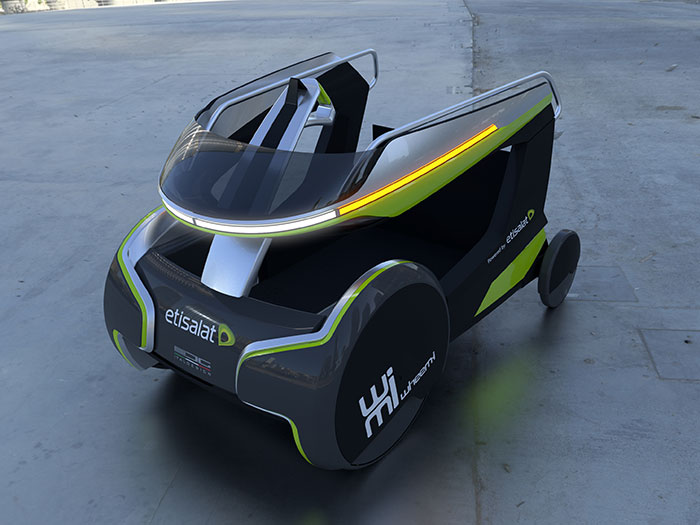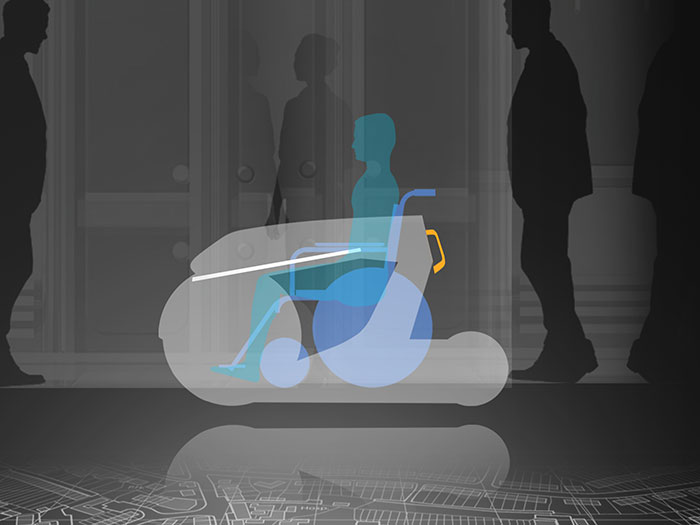WheeM-i, accessible smart mobility for wheelchair users
The Wheelchairs Mobility Interface, designed by Italdesign, is the first example of smart mobility for wheelchair users.

Not just cars, bikes or e-scooters: the concept of mobility sharing can also extend to wheelchair users thanks to an original design from Italdesign and Etisalat, at the cutting edge of smart mobility. It is called WheeM-i – which stands for Wheelchairs Mobility Interface – and was presented at the Dubai World Trade Centre during GITEX Technology Week.
Essentially, it is a semi-autonomous electric driven mobile platform, which the user can roll on with his/her wheelchair and move around the urban area, thus making getting around much quicker and easier.
WheeM-i is booked via an app, and when it is not in use it is parked in one of the hubs spread around the city. When it is no longer needed, the user simply leaves it in another hub, where it becomes available for the next user.
Not just Pop.Up Next
It is a concept not too dissimilar to Pop.Up Next, the autonomous, modular flying taxi also designed by Italdesign: “WheeM-i, like Pop.Up Next, is one of the many projects we are developing in our new mobility solutions department. Both reflect what we mean by ‘future mobility’, coming up with new solutions to improve the current situation and at the same time making it more inclusive. However long it takes to bring them to the market, the general vision remains the same,” explained Massimo Martinotti, Head of Mobility Solutions at Italdesign.
An accessible and connected ecosystem

“We strongly believe that future mobility must have a positive impact on everyone’s life. WheeM-i is part of this vision which we really hope to bring to reality,” says Italdesign CEO Jörg Astalosch. WheeM-i has an integrated system of sensors which helps the user avoid collisions with any kind of obstacle, and it is designed to easily overcome architectural barriers.
It connects to the user’s smartphone via an app, through which it is possible to interact with the device itself, with other users, and even with other forms of transport and the applications that manage them, creating an accessible and connected ecosystem.
Source: Italdesign
